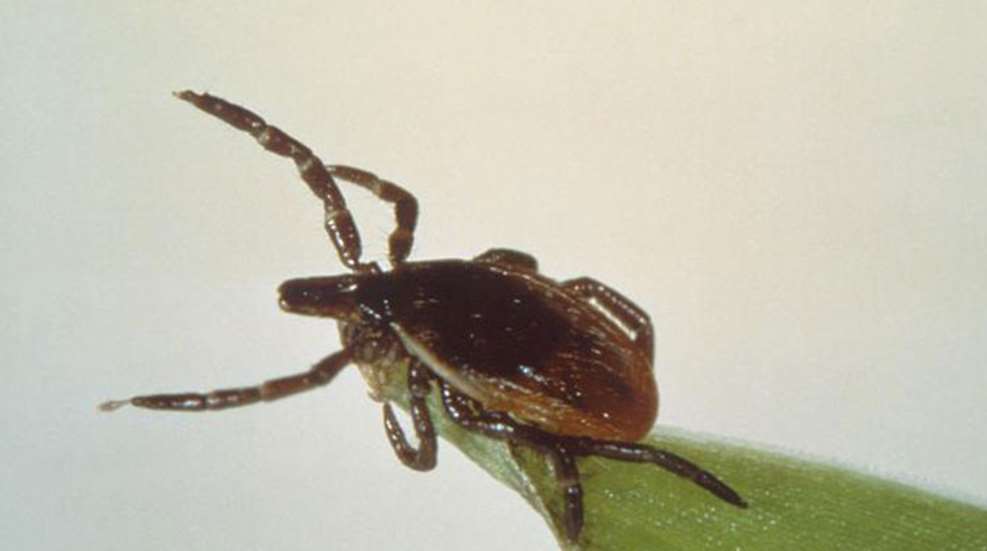
It's springtime, which means that all across the country, people are heading into the outdoors to enjoy the sunshine and greenery. Unfortunately, so are the ticks. In our recent article, we described the types of ticks that transmit disease nationwide, and where they can be found. Now, let's talk about all the ways you can safeguard yourself and your family against these little eight-legged vampires.
1. Know where they are.
Ticks tend to cluster in areas with lots of leaf litter and wooded or bushy areas, as well as high grass, to which they cling as they quest for animals that will pass through. Ticks cannot jump or fly; if you find one high up on your body, chances are quite good it climbed there.
2. Don't give them an in.
Ticks can’t bite through clothes, so that’s your first line of defense. Wear long pants and sleeves; tucking your pants into your socks or boots will help keep ticks off your ankles. (Some people even put tape around where their pants and boots meet.) Wearing light-colored clothes will help you spot ticks if they get on you.
3. Use chemical warfare.
Ticks aren't protected by the Geneva Convention, so now is a great time to make use of "better living through chemistry." The best tick repellent is a chemical called permethrin. Product names include Sawyer Permethrin Premium Insect Repellent for Clothing, Gear and Tents; 3M Ultrathon Clothing and Gear Insect Repellent (Permethrin); and Repel Permethrin Clothing and Gear Insect Repellent. Other brands are fine, too, just make sure they contain permethrin. Do note: It’s very important that you read the label carefully. Some repellents should only go on your clothes, not on your skin; others are not recommended for very young children. You can also buy clothing that's pre-treated with tick repellent; just know that it will wear off after several washings.
When using repellent, make sure you don’t apply it anywhere your skin has been broken, or directly to your face. To apply repellent to your face, spray it into your hands and then rub them carefully on your face (stay away from your eyes and mouth). Don’t apply spray or pump repellent in an enclosed space. Once you’re back indoors, wash the repellent off.
4. Give 'em a roast
Tumble-dry your clothing (and gear, if it's dryer-safe) at high heat to kill any ticks that might be clinging to it.
5. Search...
Shower as soon as you can—this is the time when you're most likely to find a tick. Use a mirror to check yourself for the bits that aren't immediately apparent, since that's where ticks most like to hide...areas of your body with thin but highly vascularized skin. Use a fine-toothed comb in your hair to ensure there isn't one on your scalp. (Your author learned this one the hard way.) Check children carefully; look under the arms, in and around the ears and the belly button. Remember that ticks can be very small, especially if they haven't had long to feed.
6. ...and destroy.
If you find a tick on you, the Center for Disease Control recommends that you remove it as soon as possible. Don’t use petroleum jelly, a hot match, nail polish or other products, they say, to remove a tick. Instead, they recommend that you use fine-tipped tweezers to firmly grasp the tick close to our skin. Avoid crushing the tick’s body. With a steady motion, use the tweezers to pull the tick away. Then wash your skin with soap and warm water. You can also use aerosol "freezing sprays" of the type used to treat warts to kill the tick, then gently remove it.
7. Make a note of it.
As mentioned in our previous article, many tick-borne ailments have vague symptoms such as headache and fatigue...and some can be quite serious if not treated early. Make a note of when you were bitten by the tick and, if possible, identify what kind of tick it was. If you start feeling poorly in the next several days, this information may very well help speed your diagnosis and treatment.
8. Burial at sea.
Once you've removed the tick, refrain from crushing it with your fingers (as satisfying as that would be). Submerge it in alcohol to kill it, or flush it down the toilet.
Image courtesy Center for Disease Control





































